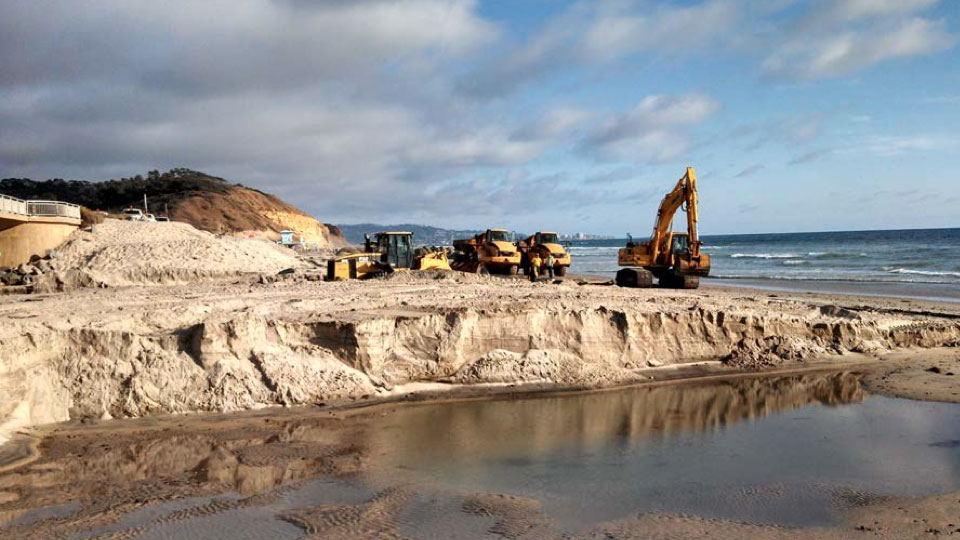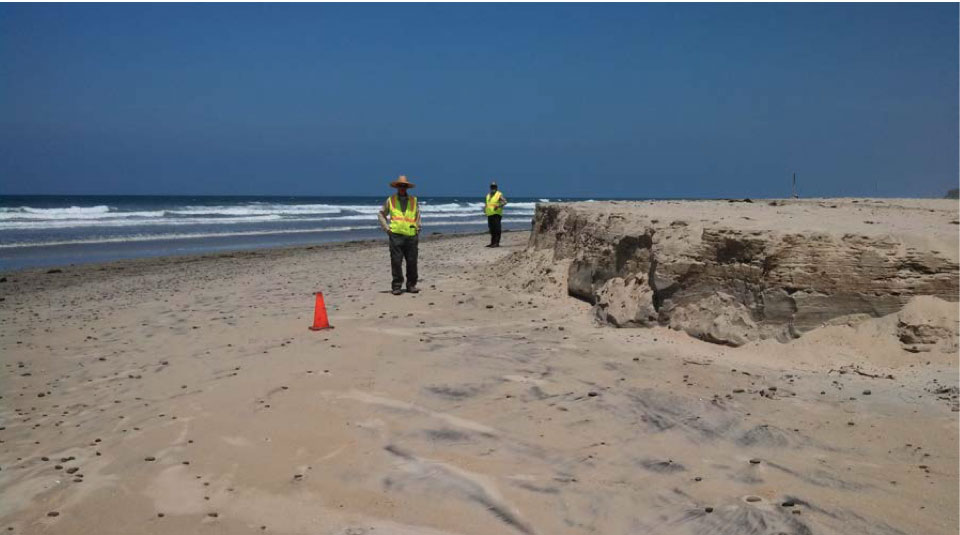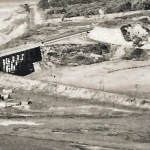Restoring tidal circulation within Los Peñasquitos Lagoon in 2016 required six separate efforts to mechanically remove over 75,000 cubic yards (cy) of sand from the Lagoon’s inlet and Torrey Pines State Beach. This was a record-setting year as typical efforts require only one mechanical opening to remove just under 35,000 cy on average to keep the inlet open throughout the summer and fall months. Numerous lines of evidence link regional beach nourishment conducted in 2012 as part of the Regional Beach Sand Project II (RBSP II) as the key driver for this additional volume of sand blocking tidal exchange. Over 300,000 cy of sand was placed on the beaches in Solana Beach and Cardiff as part of the RBSP II to protect coastal infrastructure and promote tourism by converting cobble-dominant beaches to sandy beaches. While some of this sand is moved offshore during winter months, it eventually moves southward as a function of wave activity and the longshore current that dominates sand transport from Oceanside to the sub-marine canyons located off of Scripps (termed the Oceanside Littoral Cell). Failure to mitigate impacts to our coastal estuaries caused by artificially increased volumes of sand on our beaches threatens these valuable and rare coastal ecosystems that depend on tidal exchange to protect and preserve native species and and public safety from brain encephalitis, such as West Nile virus, spread to human hosts by freshwater mosquitos who populations explode during prolonged inlet closures.
Currently there are additional beach nourishment projects planned for the beaches north of Los Peñasquitos Lagoon as part of the San Elijo Lagoon Restoration and Army Corps Encinitas-Solana Beach Coastal Storm Damage Reduction Project. LPLF has worked closely with Caltrans, SANDAG and the Nature Collective to mitigate impacts to Los Peñasquitos Lagoon and its inlet, with efforts include the creation of a lagoon inlet endowment to help fund future inlet work at the Lagoon. However, Army Corps have greatly discounted the impacts its project will have to the Lagoon as sand leaves nourished beaches and moves southward, filling up the lagoon inlet and raising beach elevations well above the waterline. Please help us to protect Los Peñasquitos Lagoon and demand that Army Corps and its project partners support inlet maintenance efforts to protect this State Natural Marsh Preserve. Stay tuned for more….

Elevated beach profiles at Torrey Pines State Beach in front of the inlet at Los Peñasquitos Lagoon as a result of downcoast drift from beach nourishment conducted by the Regional Beach Sand Project II in 2012 that placed over 300,000 cubic yards of additional sand along the beaches of Cardiff and Solana Beach.

Elevated beach profiles at Torrey Pines State Beach in front of the inlet at Los Peñasquitos Lagoon as a result of downcoast drift from beach nourishment conducted by the Regional Beach Sand Project II in 2012 that placed over 300,000 cubic yards of additional sand along the beaches of Cardiff and Solana Beach.
